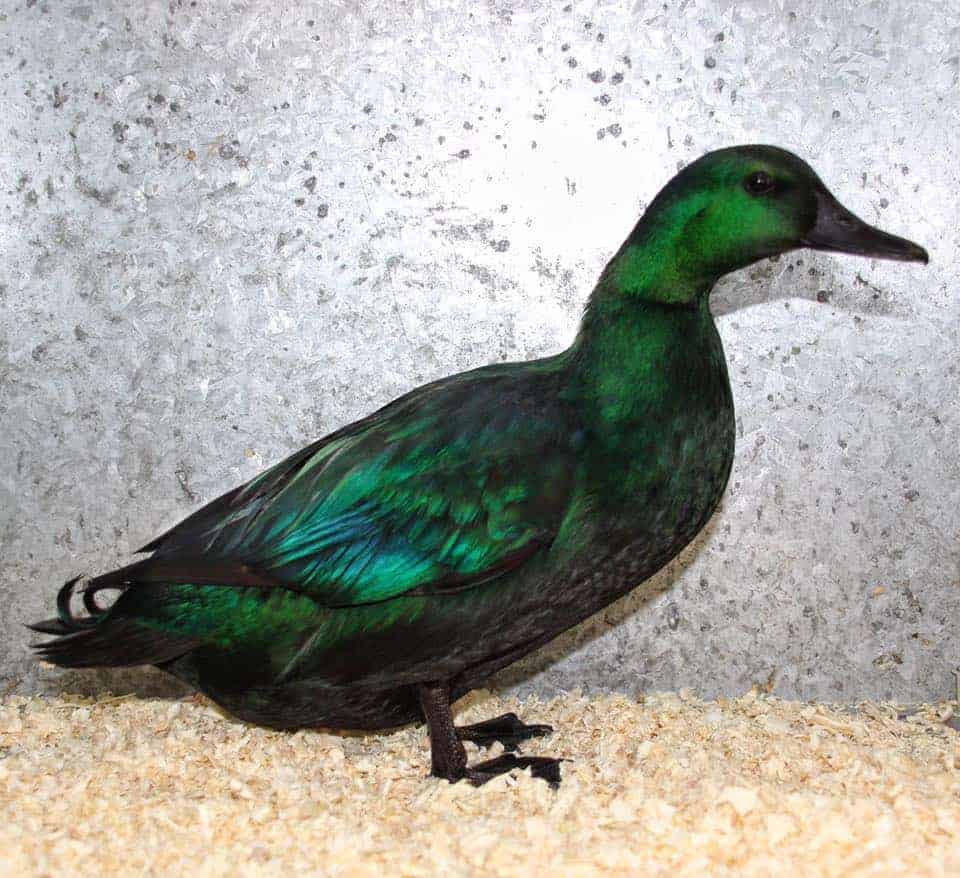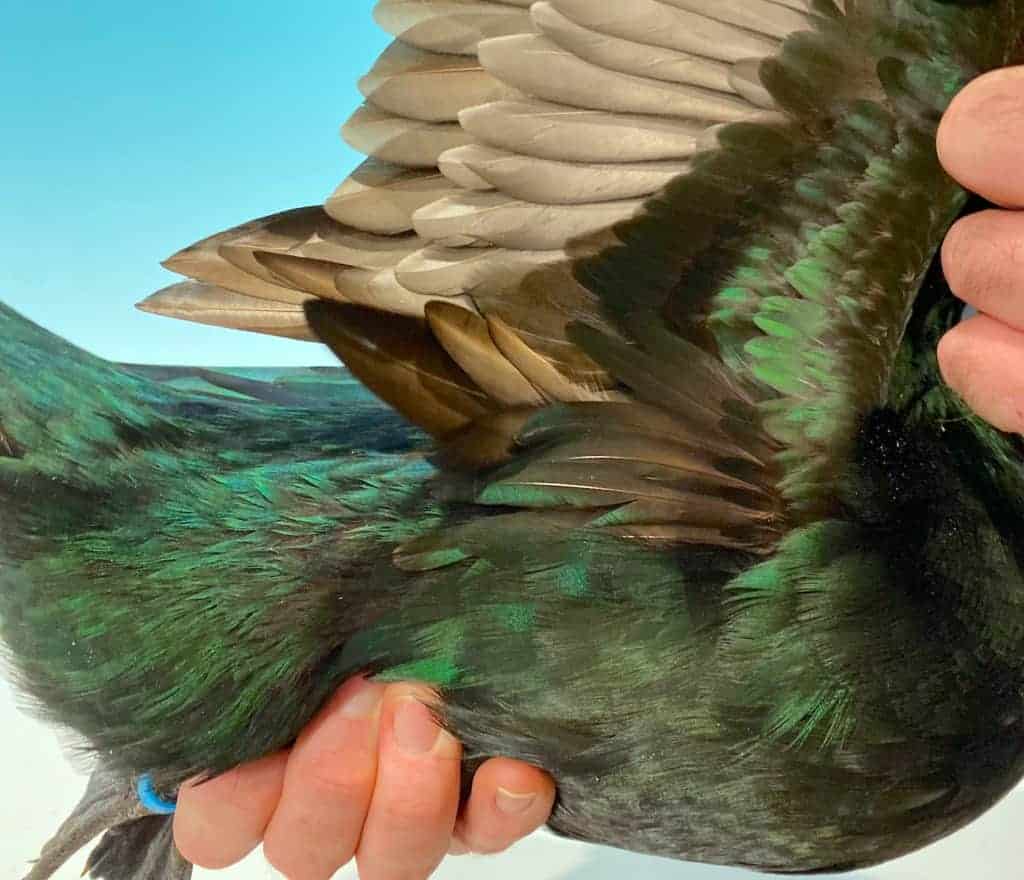Black East Indian Duck

First standardised in Britain in 1865, the Black East Indian Duck shares its epistatic colour genes with the North American Cayuga.
Black is one of several genetic traits that has been studied in domestic ducks derived from the Mallard, there is a simple guide here.
This breed is currently included on the Ducks Watchlist of the RBST.

Bantam duck breed
Domesticated Mallard Anas platyrhynchos
The Black East Indian Duck is the oldest breed of Bantam Duck. However, it has nothing to do with the East Indies.
The BEI ducks being exhibited these days have amazing green iridescence. The very best show-winning birds frequently even have a green sheen under the wings. There is no hiding the heritage: impure birds can show a little brown pencilling under the wings and also on the throat. Even in pure birds though, females tend to develop patches of white as they get older. Don’t we all!
The iridescence comes from the way light is reflected from the structure of the feathers, rather than a pigment; the base colour is black. There is speculation that the extended black gene that they share with the Cayuga may have arrived from a close relative of Mallard Ducks, the American Black Duck Anas rubripes. This is the bold assertion of early historians of the Cayuga.

The name was perhaps coined to sell the bird; the breed was actually developed in the USA and became an early import and favourite in the UK. Good specimens are real eye-catchers. Paul Ives (1947) comments ‘In 1943 the committee of three professional artists invited to select the most beautiful bird in the Boston Poultry Show, from a purely artistic standpoint . . . selected a Black East Indian drake as the most beautiful bird among 5000 specimens of all varieties of land and waterfowl.’
Black East Indian Ducks are variable in their laying ability, very much dependant on strain; anything between 40 and 100 eggs a year. Like the Cayuga, the earlier eggs have a washable dark pigment on the shells which becomes less intense as the season progresses.